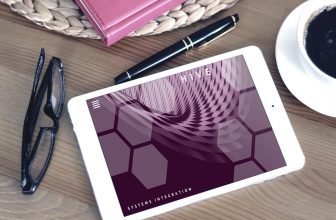How to
Improve Your Social Media Design
Color psychology
Color psychology is an effective way to improve the
effectiveness of your social media campaigns. Colors have the power to affect
our subconscious minds. They can evoke feelings of joy, fear, excitement, or
urgency. When used properly, colors can increase brand memorability by 80
percent. Using color psychology in your marketing campaigns can help you reach
more people and boost sales.
Blue is the most popular color used in social media
designs. Brands like Facebook, Twitter, LinkedIn, WordPress, and Tumblr have
all chosen this color for their logo. Red is the second most popular color but
is also the least used. Blue logos follow basic color psychology.
Font size
Font size is an important consideration for the
design of social media posts and other content on your website. If you're
creating long blocks of content, smaller font sizes can inhibit legibility. To
combat this, use a table of contents instead. These table of contents can
feature two or three lines of titles in a font size of 14px.
The ADA, which requires equal access on the web,
says that all users should be able to read and navigate content easily. This
means creating a design that accommodates everyone, regardless of age, income,
or disability. This includes making sure that your site's font size is big
enough for people to read it quickly without straining their eyes.
Image size
Image size on social media sites is crucial to your
content's visual appeal. While the optimal size varies from network to network,
there are a few guidelines that will help you maximize your visual content. The
first rule of thumb is that your image must be at least 200 pixels wide.
Anything less will be resized into a thumbnail on the left side of your post.
Also, if you want your image to appear in a mobile feed, it must be at least
800 x 800 pixels.
While you may not want to make the same image for
each social network, you should still try to maintain consistent brand
messaging. This way, you can avoid the risk of your images getting pixelated or
lost in the feed. The right image size also helps to ensure that your social
channel feed images are optimized for the content on your page. In addition,
the correct image size on Facebook can help to engage your audience and
reinforce your brand messaging.
Image weight
Optimal image weight can increase the visual impact
of your social media design. Optimized images can make your profiles more
eye-catching and appealing to visitors. A social media strategist can help you
use image weight to maximize the impact of your social campaign. Here are some
tips for enhancing image weight on your social media design.
Repetition
Repeated elements can be used to draw the attention
of the audience. Repetition can be used in several different mediums, such as
television, radio, and movies. It can also be used with products or brands with
the same visual style and final product. The same effect is achieved by using
the same colour, style, and shape in various places.
Some examples of repetitive elements include fonts,
color palettes, and logos. By using these elements consistently, you can make
your social media design look more professional. Moreover, repetition will help
you create brand recognition.
Mobile optimization
Mobile optimization is essential for reaching a
larger audience. It involves designing your website to be fully functional and
attractive on mobile devices, and ensuring it loads quickly. This will increase
your website's chances of being accessed by mobile users, as well as increase
the chances of them engaging with your content.
It can also help improve your brand's reputation and credibility. A website that is difficult to use on a mobile device will reflect poorly on a company. Mobile optimization helps to keep users happy, which means that they are more likely to buy products and services. It also builds customer trust.







